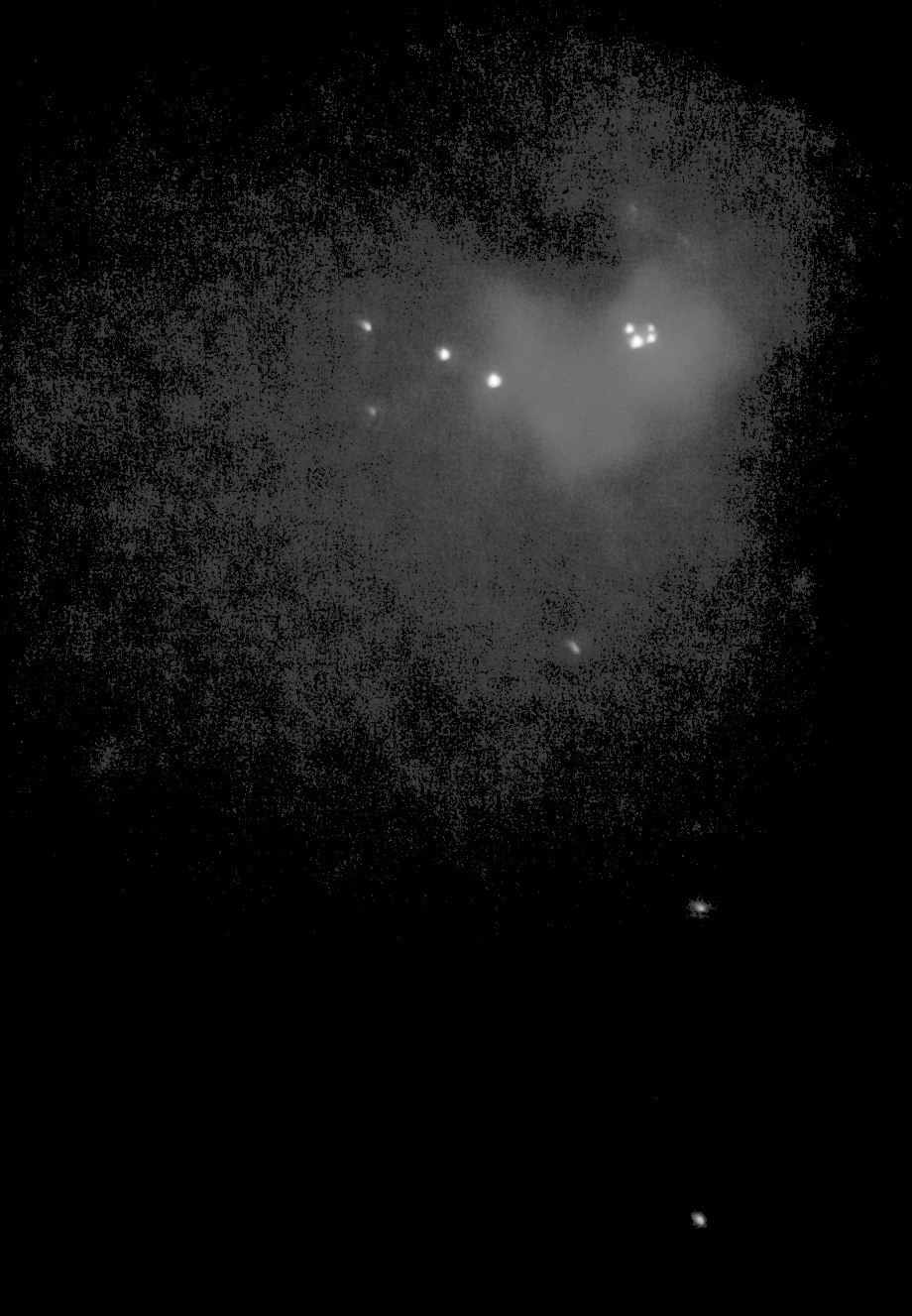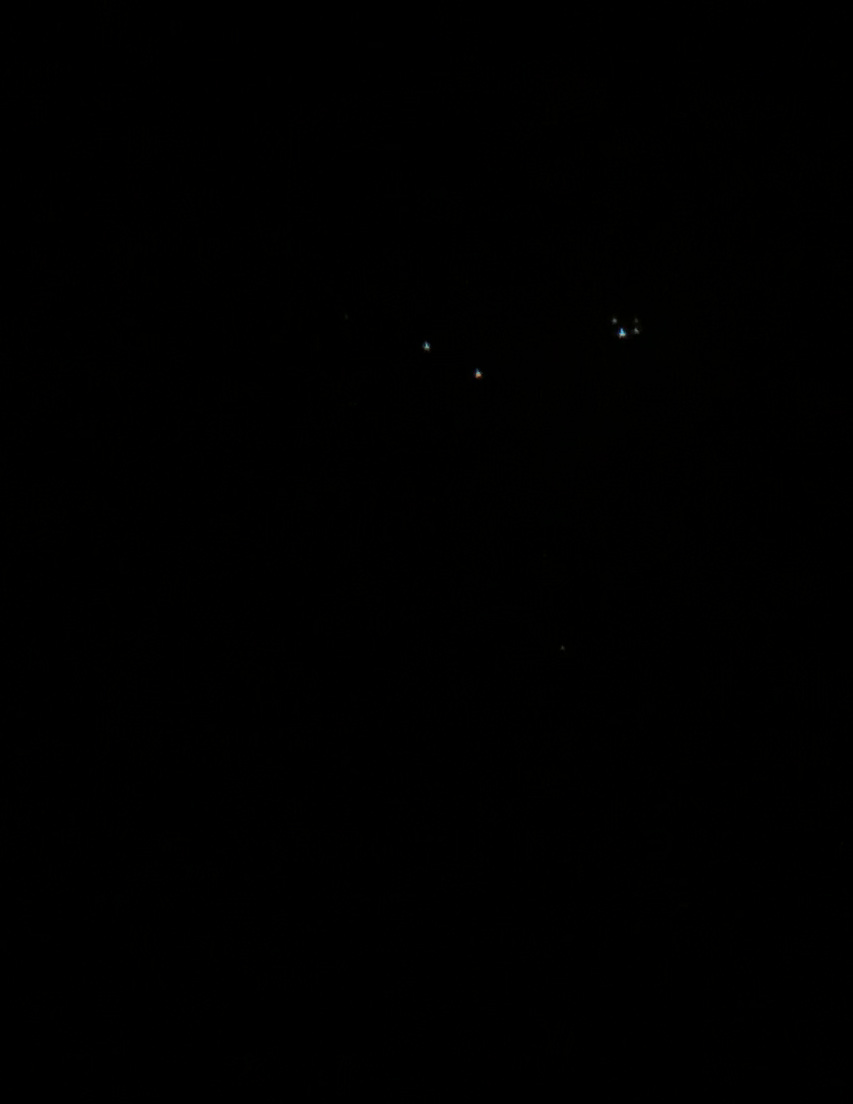First attempt at astrophotgraphy
Equipped with a Celestron C5 on an inexpensive manual alt-azimuth mount (a Celestron #93607), a 9mm X-Cel LX eyepiece, a smartphone adapter, and an iPhone XR, I attempted to image M42, the Orion Nebula.
At 139x magnification the nebula moves fast so long exposures were out of the question. To get reasonably sharp stars I shot a 25-second 1920x1080 video at 24 frames/second with a 1/24 second exposure for each frame. As I’m still getting used to my equipment, I only shot light frames. While it was clear in advance that quantization and video compression artifacts would limit the quality of such a technique, I wanted to understand what kind of results were possible with this dirtiest of quick-and-dirty approaches.
I extracted the video with ffmpeg, resulting in 606 output frames:
$ ffmpeg -i raw.MOV "out%d.png"
The first few frames showed camera shake from hitting record, so I discarded them. I then created a new astrophotography stack in Affinity Photo, automatically selected the best 50% of light frames, and ran the stack. The iPhone’s green pixels are the most sensitive so I got a nice greenish image result, nothing a conversion to black-and-white won’t cover up. I then flipped the result horizontally to correct the mirrored orientation due to my scope and star diagonal.
While the nebula doesn’t show up in great detail, I was surprised to see that it did show up. I was even more surprised to see an excellent presentation of the Trapezium and even HD 36939, a 9th magnitude star.
The final stack and an individual video frame for comparison:

